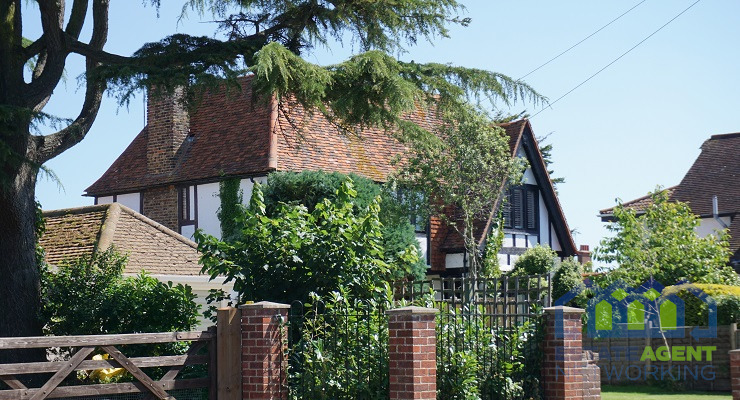Breaking Property News – 17/08/2023
Daily bite-sized proptech and property news in partnership with Proptech-X.
How do you get an office block to be carbon neutral?
Article by Zara Stanton – With 2030 being a target date for all commercial landlords and operators to get their ducks in a row, achieving a carbon-neutral office block is not for the faint hearted. As it requires a multi-faceted approach addressing both the operational emissions (i.e., emissions from daily use) and the embodied emissions (i.e., emissions produced during the construction phase). Here’s a suggested bullet point guide to make a commercial real estate asset like an office block, carbon neutral.
Energy Efficiency: Building Envelope: Insulate walls, roofs, and floors to reduce heat loss. Use double or triple-glazed windows and consider energy-efficient doors. HVAC Systems: Install efficient heating, ventilation, and air conditioning (HVAC) systems. Regular maintenance helps keep them running efficiently.
Lighting: Use LED lighting, motion sensors, and daylight harvesting systems. Equipment: Choose energy-efficient appliances and office equipment. Behavioural Changes: Educate occupants about turning off lights and unplugging electronics when not in use.
Renewable Energy: On-site Generation: Install solar panels, wind turbines, or other renewable energy sources on or near the property. Purchase Green Energy: If on-site generation isn’t feasible, purchase renewable energy certificates or contracts from green energy providers.
Water Conservation: Use water-efficient fixtures and appliances. Install a rainwater harvesting system and use it for landscaping or toilet flushing. Consider water-efficient landscaping that reduces or eliminates the need for irrigation.
Sustainable Building Materials: Low-impact Materials: Choose materials with lower embodied carbon. Examples include reclaimed wood, recycled metal, or low-carbon concrete. Local Sourcing: Source materials locally to reduce transportation emissions. Durability: Opt for long-lasting materials to minimize replacements and waste.
Waste Management: Implement a robust recycling and composting program. Encourage tenants to reduce waste. Use digital rather than paper methods whenever possible.
Transportation: Encourage the use of public transportation, walking, cycling, or carpooling. Provide electric vehicle charging stations. Consider setting up a shuttle service for employees.
Carbon Offsetting: After implementing all possible emission reductions, there might still be some emissions left. In this case, you can buy carbon offsets which invest in projects that reduce or capture an equivalent amount of greenhouse gases elsewhere.
Regular Monitoring and Upgrades: Continuously monitor energy consumption and carbon emissions using energy management systems. Stay updated with the latest technologies and best practices in sustainability. Upgrade systems and practices when needed.
Tenant Engagement: Encourage tenants to adopt green practices by offering incentives. Organise training sessions or workshops about sustainability. Provide resources or guides on how they can reduce their carbon footprint.
Certification: Consider obtaining green building certifications such as LEED, BREEAM, or others that suit your region. These certifications can offer guidelines and benchmarks for making buildings more sustainable.
Achieving carbon neutrality is an ongoing process. It’s essential to keep evaluating and adjusting strategies to ensure the office block remains carbon neutral as technologies and best practices evolve. And of course the starting point in looking to retofit or get it right from the plan stage prior to construction is to contact one of a growing number of Proptech companies specialising in this field.
Are homes in the UK going greener?
Are homes in the UK going greener and is enough being done to help people make changes. Saving money on energy bills continues to be the biggest reason for people to make green improvements to their homes. In fact, our research show that 78% of home-owners say reducing energy bills would motivate them to make changes. Higher energy bills have also contributed to one in five first-time buyers and one in five tenants saying a property’s energy efficiency will be a major factor when looking for their next home.
But two in five landlords with one property say they’re more likely to sell up than make improvements. At the moment, energy-saving improvements are expensive. For home-owners, there are not only the cost barriers to retrofitting, but also the challenge of working out which changes will have the biggest impact, and how to get started. More significant incentives are needed for home-owners and landlords to improve energy efficiency and help them bring down running costs.
The Big challenge is that the government has a target to get as many homes ‘as practicable’ up to an Energy Performance Certificate (EPC) rating of C by 2035. Our data shows that 60% of homes for sale on Rightmove – and 50% of homes available to rent – have an EPC rating of D or below.
Rightmove research shows that if EPC improvements carry on at the current rate, it would take 43 years for 100% of the houses that are currently for sale across Great Britain to reach an EPC rating of A-C, and 31 years for houses that are currently available to rent. “It’s clear that the current incentives aren’t yet big enough to make people sit up and take notice, and even the incentives that do exist aren’t easy to find out about,” says our property expert Tim Bannister.
“The benefit of making green improvements can be seen in the overall premium that a seller can command. Of course, improvements that make a home more energy efficient could also mean the condition improves, such as installing new windows, and so owners will be weighing up the cost of improvements versus the return they can get when they come to sell. But the end result of making improvements is not just a refurbished home worth more money, it’s also a greener home.
“In order to shift the demand to greener homes, incentivisation and education is key. The ‘price of cosy’, or a better insulated home, is hard to quantify until people see how it can change how they live for the better, and they need to be able to afford it,” he adds.
Tim also says: “Adoption at scale will take time and there are clearly areas that need more attention than others. Houses are much more energy-inefficient than flats, and the sales market is lagging behind what we’re seeing in the rental market.”
One of the challenges is that there are not enough suppliers and equipment for the greenest option to be the most affordable option for home-owners and landlords. “We need to wait and see what the government proposes or what green finance options become available. Affordability will remain a challenge unless the incentives are big enough,” says Tim.
“The days of building energy inefficient homes is already over, and we need to get to the point when running an energy inefficient home is a thing of the past. People need to know what to do, in what order, why they are doing it, and what benefits it will bring. Our analysis does show that our housing stock is going greener, but more needs to be done to speed it up,” he adds. (This article was first published by Rightmove in July 2023.)
Andrew Stanton Executive Editor – moving property and proptech forward. PropTech-X









